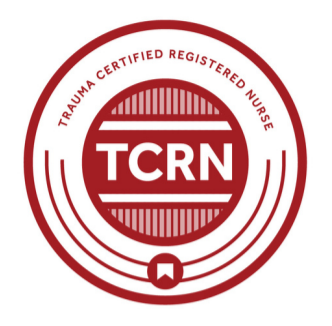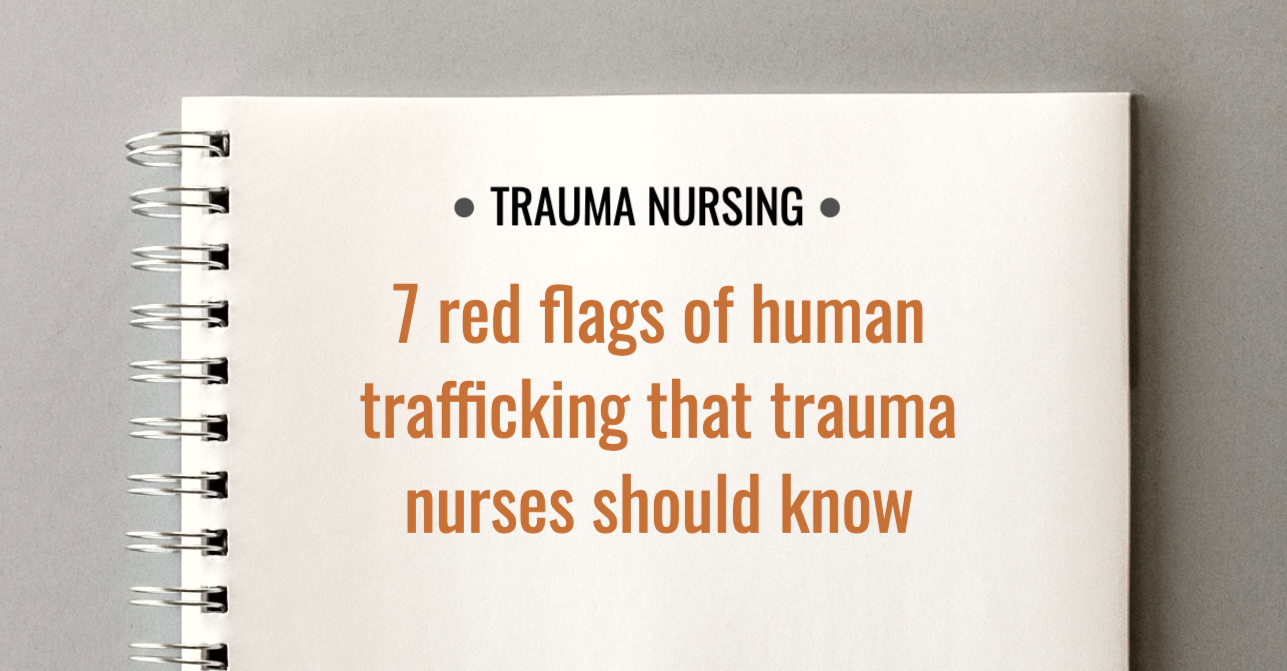Human trafficking is the crime of exploiting a person for labor, services or commercial sex. More than 100,000 victims of human trafficking are identified each year. The actual number of victims is likely much larger since it can be difficult to detect trafficking situations.
Trauma nurses have a unique opportunity to identify and help individuals who may be victims of human trafficking. According to some estimates, more than three-quarters of trafficked persons have contact with a healthcare provider while they are being victimized.
In addition, nursing assessments in the ED may uncover physical signs and other findings that point to potential trafficking.
The red flags listed below can help trauma and emergency nurses identify patients who may be victims of either sex trafficking or labor trafficking.
1. The patient’s injuries are not consistent with the mechanism of injury
Injuries that are not consistent with the patient’s story may be a sign of human trafficking. For example, a 17-year-old patient with no prior medical history presents with a long bone fracture. The patient reports that she fell from standing, but it is very unlikely that a low-energy fall could cause this injury for this patient. Alternatively, a patient reports that he cannot remember how a significant injury occurred, even though he does not report losing consciousness.
Looking specifically at sex trafficking, victims may have multiple unexplained bruises in different stages of healing, indicating regular abuse. Unexplained injuries to the genital and/or rectal area may also be a sign of sex trafficking.
2. The patient shows signs of multiple sex partners
Signs of multiple sex partners do not automatically mean the patient is a victim of sex trafficking. However, taken together with other considerations, these signs may warrant further attention. Trauma and emergency nurses should look for:
- A history of having multiple abortions
- Vaginal or rectal trauma (upon exam or given in the patient’s history)
- Frequent visits for urinary tract infections
- Frequent treatment for sexually transmitted infections
- Delayed or no treatment for sexually transmitted infections
3. The patient shows signs of neglect
Victims of trafficking may appear to be malnourished. In addition, they may have old injuries that appear to have been neglected.
4. The patient appears to be anxious and/or depressed
Some victims of trafficking may appear to be anxious, fearful, tense or nervous. Others may appear to be depressed or withdrawn.
Trafficking victims may make minimal to no eye contact with healthcare providers. In some cases, the person who accompanied the patient to the hospital may do all the speaking. This may be due to language barriers, but nurses should be sensitive to signs of fearfulness. It may appear that the patient is looking to their companion for permission to speak or trying to make sure they are saying the right thing.
5. The patient works in the commercial sex industry
Working in the commercial sex industry does not automatically mean the patient is a victim of sex trafficking. However, taken together with other concerns for the safety of the patient, commercial sex work may warrant further attention.
Commercial sex work may include:
- Working as a personal escort
- Working as an exotic dancer
- Working as a prostitute
- Working in a massage parlor
- Living in a residential brothel
Note: Any person under the age of 18 who performs a commercial sex act is considered by law to be a victim of sex trafficking.
6. The patient lives where they work or with a large group of other workers
Victims of labor trafficking may live where they work or share a living area with a large group of other workers. This can be difficult to detect in a hospital setting, but it may come to light during patient intake — for example, if a patient declines to provide a home address and provides his or her employer’s address instead.
In addition, labor trafficking victims may report poor working conditions, such as working long hours with little to no breaks.
7. The patient does not have personal documents in his or her possession
Victims of labor or sex trafficking may not have their personal identification documents in their possession. In addition, the patient’s money and/or cell phone may be in the possession of someone else.
Other financial signs of human trafficking are owing a large debt to their employer and having been hired for a job based on false promises. The victim may state that he or she moves frequently and is not free to come and go at will.
In general, human trafficking victims may convey a sense of isolation. For example, they may be unsure what day, month or year it is or uncertain of their current location.
 Learn more about how to support trafficking victims
Learn more about how to support trafficking victims
This article is based on Human Trafficking, an interactive online course from the Board of Certification for Emergency Nursing (BCEN®). Developed by trauma nursing experts, this CE-eligible course explains how to spot potential victims of human trafficking, how to talk to them about your concerns and how to get them the help they need. To access Human Trafficking and other courses for trauma nurses, visit BCEN Learn.



